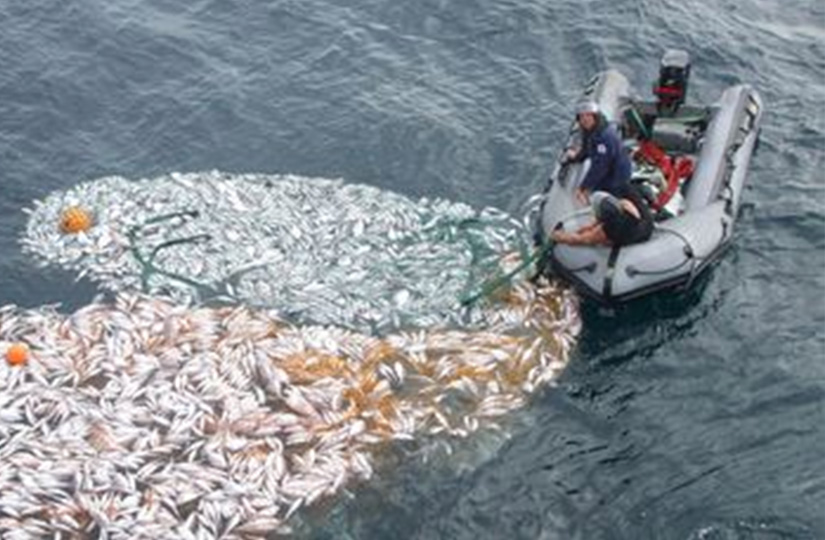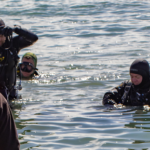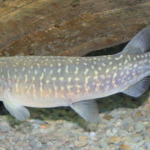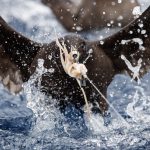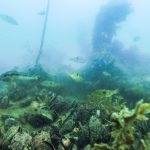Gulf Journal: Daniel Pauly is one of the leading figures in international fisheries management, known for presenting a bleak picture of the state of world fisheries. How relevant is Pauly’s work to the situation in NZ?
Barry: There are 2 important lessons to be taken from Pauly’s work that apply to New Zealand’s inshore fisheries in particular. The first is the concept of moving baselines; this is where each generation assumes the changes they experience in their lifetime are the major changes that have occurred to a fishery. The historic abundance and diversity are lost without thought – it’s as if our inshore fisheries always looked similar to what they are now, or how we remember them as a child.
This is clearly not the case, and as we strive for restored abundance, the rebuilding of our inshore fisheries, we have to overcome the moving baseline and accept how far we have depleted and degraded our fisheries. It is by accepting that the loss over time is indeed far greater than we comprehend that we can become serious about rebuilding; knowing we have inshore fisheries able to sustain much higher abundance and diversity, and it is our obligation to begin this journey.
The second point to take from Pauly is that international opinion is united; if globally we maintain the status quo in repect of fisheries exploitation we will continue to lose abundance. Something has to change significantly if we are to arrest the decline in fish stocks and find a pathway to restored abundance. Some might say that New Zealand is different, we are better than the rest, but in respect of the inshore fisheries this is delusional. Most of the fishing public note the inshore fisheries are continuing to decline, with some stocks on the point of collapse. CRA2 (rock lobster from Te Arai to Cape Runaway) and HP B1&2 (Hapuka from North Cape down the east coast to around Wellington) stocks are good examples. These stocks have gome from very abundant 150 years ago, to abundant 50 years ago, to still OK just have to travel further 20 years ago, to relatively rare now. There has been barely a murmur in protest.
A final encouragement from Pauly is the acceptance that stocks will rebuild if given the opportunity and in New Zealand we can see kingfish as a good example. By restricting catches to low levels the stock is rebuilding strongly. The same formula is available for other depleted inshore stocks.
The global historic catch reconstruction work led by Pauly has a New Zealand component. What picture does that paint and what are the implications for our management system here?
The catch reconstruction illustrates the haphazard nature of catch reporting, and the poor quality of catch statistics globally. From New Zealand’s perspective we sit around the upper end of countries that have had their catches reconstructed and have reported less than half of actual catches. There are a variety of views on how this would affect New Zealand’s stock assessments and what the implications are for wider management.
The large unreported catches, mostly dumped, support the notion that we underestimate the degree of depletion … that we under estimate the unfished biomass. This is in part due to the failure to account for the moving baseline. Biomass levels of 150 years ago were far higher than contemporary science appreciates.
The other disturbing revelations relate to the Ministry of Primary Industries’ poor record of prosecuting known non-compliance with the law, and the extent to which fishers must break the law just to survive as an Annual Catch Entitlement (ACE) fisher operating within the Quota Management System (QMS). The QMS is obviously broken and in need of a major overhaul, or even better, discarding and replacing with a system that can allow fishers to operate legally and generate and capture value.
My own view is that so long as a handful of New Zealanders operate in concert to capture all the value from New Zealand’s fisheries we will never progress to a point where high value use can evolve. This view is supported by the catch reconstruction.
There has been a lot of recent investment in Precision Seafood Harvesting technologies and associated marketing strategies to add value and attention to electronic monitoring systems to reduce waste. Are these likely to be transformational?
The Precision Seafood Harvesting technologies are a research project still underway. It is premature to speculate what the final achievement will be. I am assured there are advantages in the deepwater, for example hoki, where improved fish condition coming aboard has allowed higher value use.
It is less clear in the inshore, where there are obviously high expectations. “It will revolutionize fishing in the world” is a claim often heard. Capturing high value from our fish stocks is of course an overarching objective to all fishing. New Zealand needs to maximise the earnings from all our fisheries resources. The Seafood Precision Harvesting work must be allowed to run its course and see what benefits can be created and captured.
In respect of electronic monitoring the situation isn’t as clear. Essentially the Vessel Monitoring System (that transmits the vessels’ positions) is a simple off the shelf technology easily adopted by vessels. The use of cameras to observe fishing operations is widely used in Canada, where a system has been running for 15 years providing data that is analysed and has proved successful in detecting non compliance. New Zealand could have simply adopted that system but have instead decided on developing a new system by Trident, the commercial industry’s research company. So now we have a system designed and run by the people it’s supposed to monitor, with no demonstrated efficacy, and no public accountability. That will almost certainly be a fatal weakness. There should never be collusion between the parties being monitored and the monitoring party. There is no public access to this data and we have already had examples of industry collected data being misrepresented. By not making this data available to the public immediately raises suspicion; what is there to hide?
It is imperative that all data generated to manage fisheries is publically available. A public resource requires public scrutiny. The old commercial confidentiality chestnut can be safely set aside due to the small number of vessels operating in the inshore – secrets are impossible to keep in this day and age.
Is there a useful distinction to be made between the way we consider value and the management of deep water and inshore fisheries?
It is useful to reconsider how we rate value and how we incorporate value into fisheries management. There are clear differences between deep water and inshore stocks, with deep water stocks having only commercial fishing effort being applied while the inshore stocks have several different use demands placed upon them.
There are different value propositions in the inshore fisheries that make vital contributions to the communities and economy of New Zealand. Commercial fishers put fish in the supermarkets, customary fishers serve a vital function for sustaining the marae, while recreational fishing is enormously popular with the public. Then there is the high value tourism sector and the non extractive value generated by bird watching, diving in Marine Protected Areas etc. Each value proposition is different and serves to guide the Minister’s management decisions that must be made in the national interest.
What is clear now is that the status quo has a very large and unaccounted for opportunity cost. The depletion is so great along the inshore that participation is falling among the public that find little to celebrate when the waters are so fished out and contaminated. We can capture many times the current value by reducing commercial catches and some recreational catches, and allowing the fish stocks to rebuild to levels that deliver far greater value to New Zealand.
The opportunity cost to New Zealand from managing inshore stocks at such low levels is never accounted for and Ministers are never advised of the lost economic opportunities from simply retaining the status quo and assuming that exporting fish for others to eat is the best use of such a limited resource.
Another of your speakers – Rob Southwick – applies analysis to the hunting and fishing economies in North America. What is the relevance of this work to New Zealand?
For decades commercial fishing has been considered an economic activity and recreational fishing a recreational activity, and it was essential to obtain a description of recreational fishing in New Zealand in dollar terms. How can a Minister be expected to allocate resources in the national interest when such a large inshore component has no economic data? Filling that void was a task undertaken by the New Zealand Marine Research Foundation with assistence from the NZ Sports Fishing Council and LegaSea.
The figures are very informative and able to give a good description of the economy around recreational fishing. It is plain that the recreational fishery is also a commercial fishery in respect of the large industrial base and distribution networks supporting the economy. One thing it did reveal was that for many inshore fish stocks recreational catches generated far higher economic contribution per kilo of fish killed.
Many inshore fish are caught commercially and exported for very low prices – between one and three dollars for many species. It’s a waste, and an unecessary cost incurred by NZ Inc when these stocks are fished right down for almost zero return. This is the status quo and it must change.
A common perception of recreational fishing is that it is insufficiently regulated and its catch largely unknown. Is this the case?
Bruce Hartill’s work at NIWA is of a high standard and he is held in high regard internationally and by LegaSea. All catch statistics are in essence estimates rather than accurate measurement. In respect of estimating recreational catch from the inshore stocks there is a reliance on the large scale multi species survey, where trailer boats are interviewed at boat ramps while an aircraft flys over and counts boats on the water and logs the location. From this it is possible to generate a high quality catch estimate. There is another one planned to commence soon. These provide good estimates where there are plenty of fishers operating, and less so as the participants become few (there just isn’t enough reporting to be confident).
There will always be folk sniping at the recreational catch and making claims about their catch as it serves others’ self interest. Within the bounds of confidence the catch estimates from NIWA are certainly good enough to manage by. Whether catches are known to the last kilo is moot; it doesn’t change anything enough to drive different management settings. NZ Fisheries Management isn’t suffering from a lack of data on recreational catches. It is suffering from the inability to reduce commercial and recreational catches to generate a rebuild of inshore stocks.
Evelyn Pinkerton offered some examples of co-managed fisheries around Canada. What principles have been applied there that enable outcomes from fisheries management to align with community and indigenous peoples’ expectations.
The foremost principle is to set your own interests aside and agree on a set of rules that will apply to the fishery that is in the long term interests of the country, and thereby its citizens. The big test is when there is a need to take less now so that there will more for everyone later. Will current users forgo catch for several years so the inshore fishstocks will rebuild back to abundant levels and provide more for everyone in the future? That is the acid test.
In Canada this has occurred and a set of rules has been agreed by all users with the aim to restore abundance by rebuilding depleted stocks. This didn’t arise from a stock assessment; rather it came from indigenous interests that pressed their claim through the Courts that they held ‘conservation rights’ to the local herring fisheries and in their opinion the stock needed conserving. They succeeded and now a strong co-management structure has been formed that includes users and government departments.
I was very keen to have Evelyn join us so we could better understand what helps when forming a co-management structure and what impedes success. It is clear that at least the high use areas of our inshore fisheries need co-management to at least the territorial sea (12 mile limit). Customary management lacks a pathway for implementing conservation rights, which they surely hold.
Once the need for change is accepted pursuing a New Zealand co-management governance structure becomes obvious. This will take time and a beginning has been made by opening this discussion up and seeing what will work for Maori, the public, and commercial users. There have been some recent attempts at forming a workable co-management grouping, the Snapper 1 Strategy Group and Sea Change, are two examples that intersect with the Northern inshore fisheries.
Selected presentations from April’s New Zealand Fisheries Symposium are available at http://abundancesymposium.nz/schedule/


